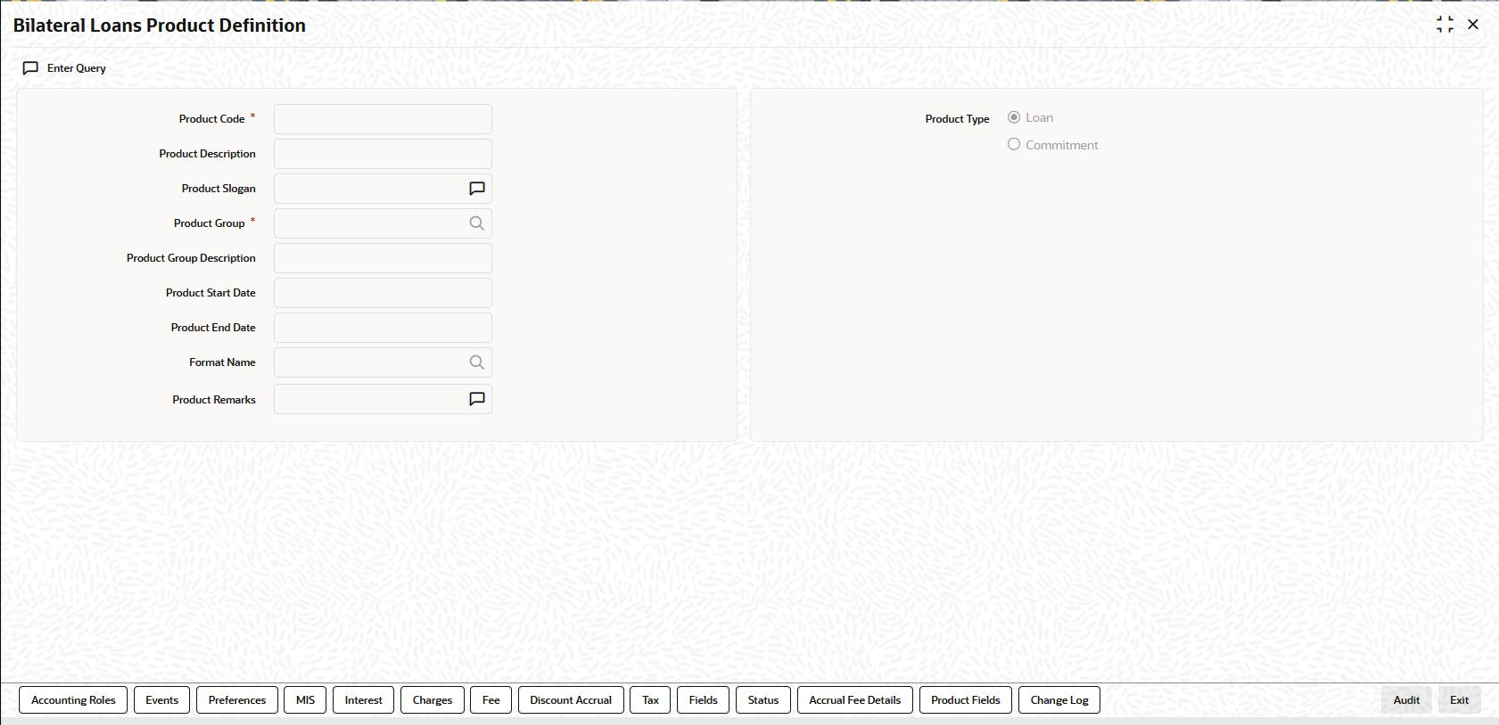3.1 Introduction
In this topic, focuses on defining the attributes specific to a Loans product.
You can create a loans product in the Bilateral Loans Product
Definition screen.
Specify the User ID and Password,
and login to Homepage.
Parent topic: Defining Attributes Specific to Loan product
